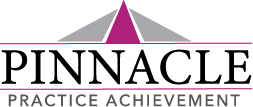COVID-19 Office Precautions & Suggestions
The following precautions and suggestions can be taken or modified to fit the needs of your practice, staff, and patients. As this pandemic causes constant societal and economic changes, please use your best judgment in re-adjusting your own plan as needed.
- Keep reminding your patients that you are available to treat in the office for urgent and medically necessary visits as well as via Telehealth. If you are reducing your hours make sure to communicate this on your website, social media pages, via e-blasts and through notifications in the office.
- Post the precautions you are taking to limit exposure in your practice, on your website, and via social media. Radio silence during this uncertain time is not reassuring.
- Call each scheduled patient 24-48 hours in advance (discontinuing use of automated reminder systems for the time being) and determine if they need to be seen (ingrown toenail or other office procedure, pain or injury requiring x-rays or other diagnostic exams) or would prefer to set up a Telehealth visit (this can be established by DPM and staff member reviewing the schedule and patient histories together and determining if this type of visit would be appropriate).
- Telehealth (Non Face-to-Face Service) appointments should be scheduled in the EHR calendar (same as clinic patients) and clearly marked as Telehealth visit via phone call, FaceTime, Skype, etc.
- Screening phone calls should be made with the intention to determine if:
- The patient has traveled to or returned from countries or regions outside the U.S. for the past 14 days (reschedule)
- The patient has any of the following symptoms: fever, cough, or shortness of breath (reschedule)
- The patient has been in contact with someone with known or suspected COVID-19 (reschedule)
- Schedule patients so that each can be taken directly into a treatment room upon arrival (some offices are removing chairs from waiting rooms).
- If patients do have to wait prior to entering the treatment room, remind them of social distancing recommendations and arrange seats 6 feet apart.
- If patients rely on public transportation and need to come in, try to plan accordingly as many have extended wait times to be picked up.
- Ask that patients do not bring anyone with them to their appointment. If they rely on a family member or friend to drive them to their appointment, especially for post-op patients who need to be seen, ask that they wait in the car.
- Provide hand sanitizer for use at check-in/check-out areas (in view of staff members as these types of products may “disappear”).
- After patients sign forms or consents, tell them to “keep the pen” or have patients sign consents via iPad or tablet and disinfect the screen or stylus after each use.
- Remove magazines and children’s toys from your waiting room areas to help prevent the spread of the virus.
- Sanitize common areas more frequently
- After each patient disinfect exam chairs, countertops, door handles, etc
- Ask each staff member to use the same phone throughout the day
- Suggest that staff members in the front and back wear gloves at all times
- Have face masks available for patients and staff members
- WASH HANDS with soap and water for at least 20 seconds frequently and avoid touching your face
- No-touch methods should be used to dispose of waste materials if possible.
